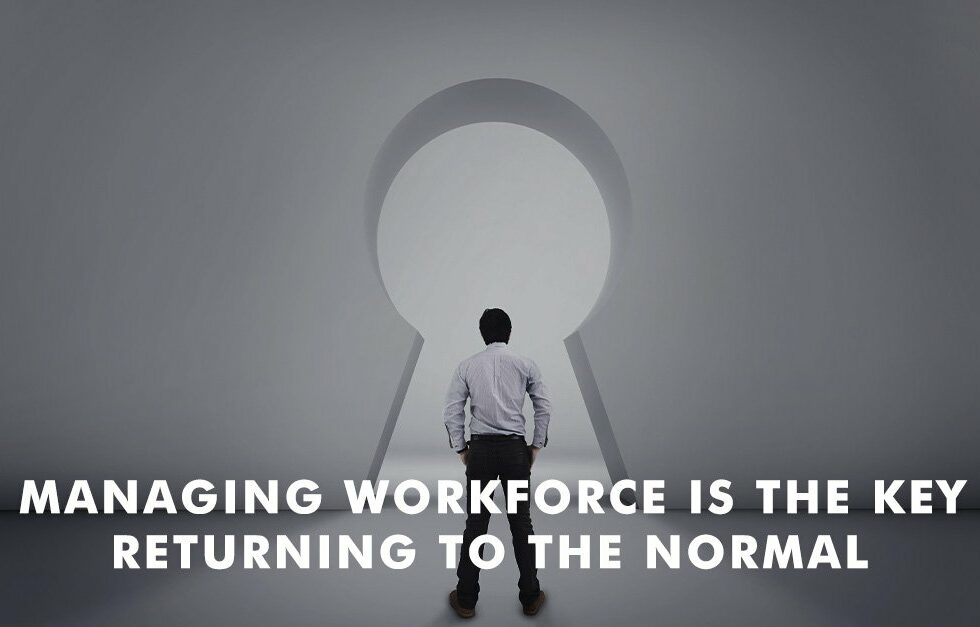“In the COVID and post-COVID era, organizations’ capabilities to manage the people at work and managing workforce are going to be an integral part to achieve improved business performance.”
Came COVID-19 pandemic, and the world went for a toss, the businesses resulting in a haywire condition; some go all over the place.
At the same time, some managed to survive, whereas some adapted to digital technologies.
The digital transformation I the new normal. While the COVID-19 pandemic has presented the world with challenges, it has also offered lucrative opportunities for businesses to thrive.
The digital transformation of the business processes forced the business to adapt to the digital practices to remain competitive.
While it is imperative to thrive and remain ahead in the businesses; utilizing the resources and making the most of the digital tools is also important.
Digital Workplace is on the rise these days.
Hence, the emerging technologies, innovative solutions, and digital tools make it possible to achieve the desired goals and objectives that businesses set for themselves and their vision.
Realizing the unlimited potential from the businesses depends on the efficiency of the workers; which gets achieved through the robust participation from the workforce.
Hence, managing the workforce from the front becomes an essential tool for efficiently achieving business goals and objectives.
Also, it helps in the transition to digital, a more subtle and easy process.
Digital Workplace and Digital Workforce is the Future:
Nothing is denying the fact that digital is the new normal; and hence, digitization of business practices will be the trend.
Digitization of business practices has prevailed across the globe.
The organizations have adopted the “Work from Home” model.
The students are getting an online education, and the customer, extensive industry such as the Banking sector, has adopted partial digitization in its business practices.
The physical brick-and-mortar offices get converted into the digital workspace, where thousands of employees get interconnected with the digital infrastructure, online tools, and backend digital services.
Remote work is here to stay; and hence, managing the workforce virtually will be a crucial element to achieve a happy virtual workforce.
According to a recent survey conducted for the workforce among the organizations across the sectors; a massive chunk of 74% of employees responded to continue with the remote working practices post relaxation of the previously induced COVID-19 restrictions.
The organizations that were vulnerable to investing in digital transformation tools now see massive support from upper management and employees’ adaptability; too that thrives the businesses and the transition.
Managing workforce from the front in a post COVID era:
The rise in technological investments, the prevalence of redefined business practices, and the initiation of transformed BCP’s (Business Continuity plans) are innovative ways to transform the digital transformation.
However, digital transformation is not possible without the active participation of the workforce, and hence stakeholders’ engagement becomes crucial.
Active participation from the stakeholders such as employees, customers, and C-suite executives leads to a transformed digital business environment that takes care of the digitized business.
Furthermore, taking care of the employees from the front, too, becomes a critical tool to achieve the desired business goals and objectives.
Training and Development:
It is almost impossible to manage what we cannot measure. Hence, measuring the gap in digital practices and filling it with the right expertise increases overall business performance.
The traditional business practices use traditional methods to operate, which ceases the business processes in today’s digitized business environment.
Therefore, employees reskilling using the advanced training and development campaigns result in an effective digital business scenario, thus managing the employees from the front.
Data is the Key:
Just like data-driven business decisions outnumber the traditional intuitive decision making.
Similarly, managing people with the data plays a crucial role in achieving business competence.
Implementing digital tools with built-in analytics and insights help organizations determine individual employee performance to achieve team productivity.
Data-driven activities enable organizations to identify employee behavior that enhances organizations’ business performance.
Social-Interpersonal Interaction:
Having redefined digital models are not enough for transformed digitized business practice.
To manage the employees efficiently, having a social, interpersonal connection with the employees becomes imperative.
With a surge in remote work culture, the tools that encourage active communication from the employees and communities help create the virtual company culture more effectively.
Such tactical yet employees’ interactive moves lead to meaningful connections and a positive impact on employee productivity and engagement across the organizations.
Conclusion:
A digitized virtual workforce is here to stay.
Even once the COVID-19 induced restrictions are lifted, the hybrid “wok from home” models will prevail.
Hence, managing the virtual workforce with the active participation from the stakeholders, data-driven employee-centric activities, and social, interpersonal connections with employees leads to improved business performance.




